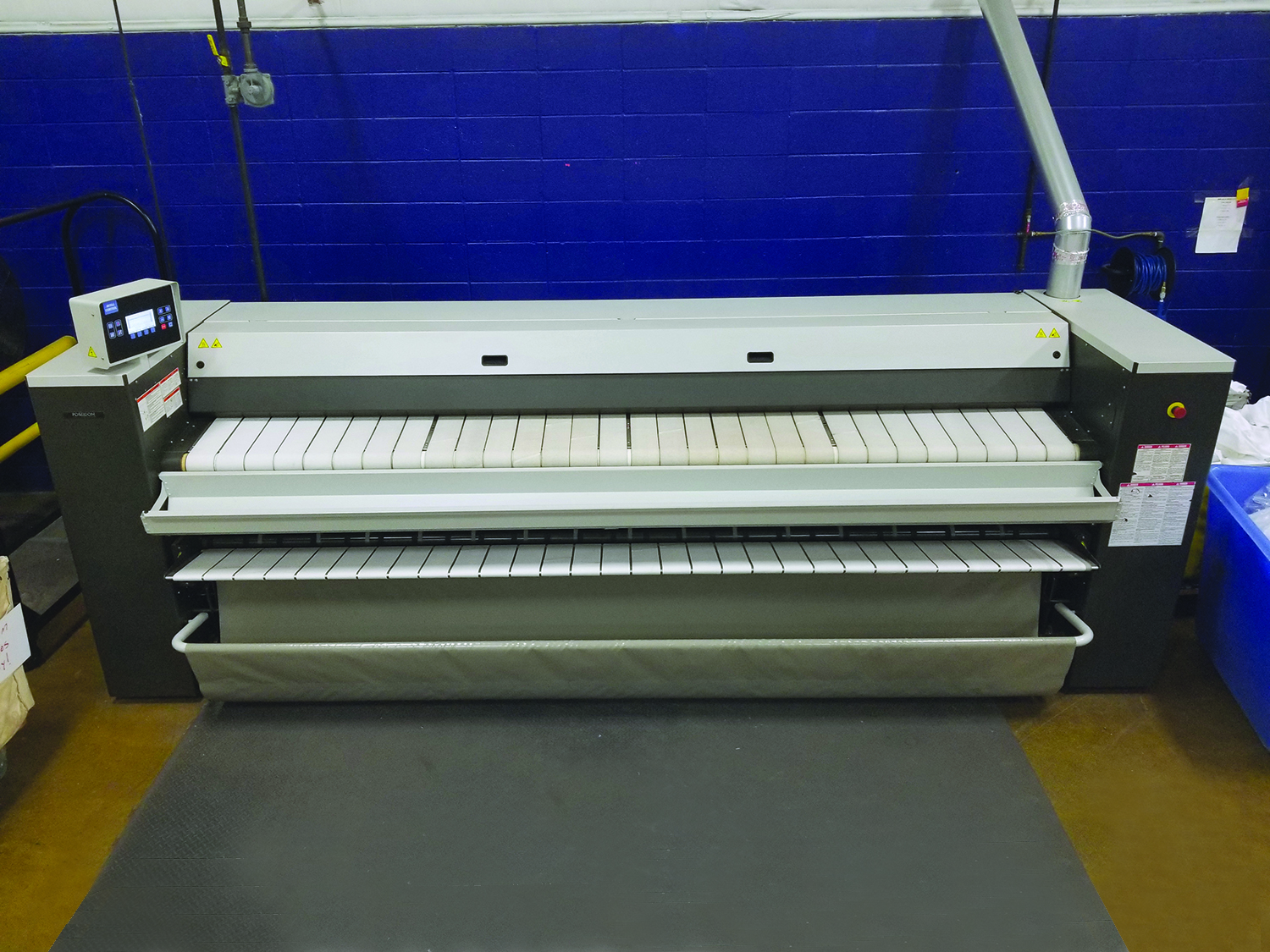There’s huge opportunity out there for dry cleaners and textile care companies to capture big business from both existing and new residential and commercial customers. All it takes is a flatwork ironer … I’ve seen big gains in revenue and profits thanks to one piece of equipment. My recommendation? If you’ve got a bit of free space, put one in!
Many dry cleaners around the country are capturing additional residential business by providing laundering and dry cleaning services of household textiles and clothing. Moreover, they’re pursuing commercial opportunities, with vacation rentals, catering companies, military bases, etc., by providing laundered towels, bed and table linens.
The problem lies in the fact that it is simply too time consuming and costly to properly finish flatwork bed and table linens using a hot-head press. In order to really launch production and quality — using very little labor — you’ve got to invest in a flatwork ironer.
When you do, you’ll be able to confidently promote and maximize business within these sectors while enjoying a quick return on investment.
Installation Requirements & Capabilities
A 20-inch flatwork ironer with an integrated folder, like models offered through Poseidon Textile Care Systems®, require 200 to 250 square feet, utilize natural gas and take two people to operate. If you’ve got the space, I find it’s the perfect size for most fabricare operations. It quickly irons pillowcases, bed sheets, duvets, drapes, round and rectangular table tops, as well as napkins in a fraction of the time of a hot-head press. It processes damp linen straight from the washer at speeds ranging between 4- and 50-feet-per-minute, and performs the first primary fold automatically. Additionally, since linens bypass the dryer before being fed into the ironer, production time is increased and dryer bottlenecks are eliminated.
One of the companies I work with, Royalty Cleaners, in Royal Oak, Mich., recently installed one. Using a hot-head press, it previously took 5 to 15 minutes to finish one sheet and 20 minutes to press a duvet. Now it only takes 20 seconds to iron and fold a king sheet or duvet straight out of the washer. Owner John Harris maintains the ironer has been a “game-changer” for business.
Similarly, Peerless Cleaners, in Fort Wayne, Ind., replaced an older ironer with a new 20-inch flatwork ironer with integrated folder. With the old ironer, all the folding was done by hand, which took a lot of time. Now, the new ironer’s integrated folder automatically pre-folds linens for significant time and labor savings. “When items come out of the ironer, all we need to do is perform another flip,” said President Steve Grashoff.
If all this sounds great, but your plant lacks the 200 square feet of space necessary, you can still get great productivity from a smaller, 13-inch ironer without the folder. That option requires 100-125 square feet of space but you’ll need to fold large table linens before feeding them into the ironer. The good news is that either option is basically “plug and play.”
Labor, Operation & Maintenance
When ready to invest, get the ironer from a reputable distributor who’ll train your staff in operation and maintenance. Look for a model that is easy to maintain and offers a wax-less design, because applying wax correctly is a difficult process. A wax-less ironer is simple to install, operate and maintain.
In terms of operation, a 20-inch ironer requires two people to feed large tablecloths, sheets and duvets and one operator to run pillowcases, napkins and chair covers on multiple lanes. And, because it’s powered using natural gas, this can be done after the plant shuts down. At Royalty Cleaners, John Harris processes flatwork with another person on Sundays.
The ease of use and speed makes a flatwork ironer more effective and profitable than using a hot-head press.
Finish Quality
The quality is also superior, which is critical, since residential, vacation rental and catering customers want beautifully ironed, crisp table and bed linens. And, dry cleaners are demanding a high price for these services.
Steve Grashoff, at Peerless Cleaners, maintains there’s no way they could have serviced food and beverage accounts with his old ironer because of lack of quality. But, with the new ironer, they’ve branched out to new revenue streams within the commercial sector, including restaurants and catering companies. “Now we can,” said Grashoff, “and we are picking up accounts all over the place.”
And, when compared to a hot-head press, a flatwork ironer wins out in every category, including quality.
Bottom Line — Profits
But, what about bottom-line profits and ROI? Flatwork ironers are not cheap, but if installed, promoted and used to even half potential, most businesses realize an ROI of just a few months. This is because it’s so much easier to offer ironing services. You’ll quickly become comfortable promoting those services in whatever sector you pursue. Your flatwork business might even become your most profitable revenue stream.


